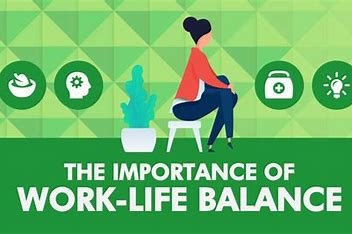In today’s fast-paced world, achieving a harmonious work-life balance has become a significant goal for many individuals. Balancing professional responsibilities with personal well-being is essential not only for mental and physical health but also for sustained productivity and happiness.

1. Prioritize Your Time
- Identify your most important tasks and goals, both professionally and personally.
- Use tools like calendars or to-do lists to organize your day effectively.
- Avoid overcommitting; learn to say no to tasks or events that don’t align with your priorities.
2. Set Boundaries
- Establish clear work hours and communicate them to colleagues and family members.
- Create a designated workspace if working from home, ensuring it is separate from your living areas.
- Turn off work-related notifications outside of work hours to fully disconnect.
3. Practice Self-Care
- Incorporate regular physical activity into your routine, such as yoga, jogging, or gym workouts.
- Ensure you get adequate sleep every night, as rest is crucial for mental clarity and overall health.
- Engage in mindfulness practices, like meditation or deep breathing, to reduce stress and improve focus.
4. Foster Meaningful Relationships
- Spend quality time with family and friends to nurture personal connections.
- Participate in community activities or join groups that align with your interests.
- Communicate openly with loved ones about your needs and challenges.
5. Pursue Hobbies and Interests
- Dedicate time to activities you enjoy, whether it’s painting, reading, gardening, or playing a musical instrument.
- Exploring your passions can provide a creative outlet and enhance your sense of fulfillment.
6. Evaluate and Adjust Regularly
- Periodically assess your work-life balance and make necessary changes.
- Be open to feedback from colleagues, friends, and family to identify areas for improvement.
- Recognize that balance is dynamic and may require adjustments as circumstances change.
7. Seek Professional Support When Needed
- If you’re feeling overwhelmed, consider consulting a therapist or counselor.
- Attend workshops or seminars on time management and stress reduction.
- Utilize workplace resources, such as employee assistance programs, to support your well-being.
Implementing these strategies can help you create a more balanced and fulfilling life. Remember, achieving work-life balance is a continuous journey rather than a one-time goal. Prioritize what matters most and make adjustments along the way to sustain harmony and joy in your personal and professional life.
